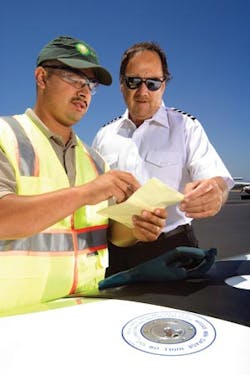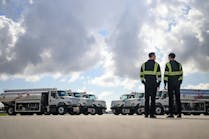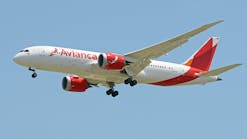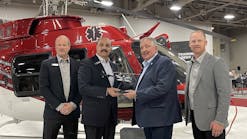Aircraft Misfueling? One might respond, “I thought that problem went away in the '80s.” However, a number of recent misfueling incidents from around the world demonstrate that while it may be rare, misfueling remains a serious threat.
If an avgas-powered aircraft is inadvertently refueled with jet fuel, there can be sufficient avgas remaining in the aircraft’s fuel lines and carburetors to enable the aircraft to taxi, run up, and even take off. When the jet fuel reaches the engine — often at a critical time during takeoff — the engine can fail and cause a forced landing or worse, a crash.
A similar situation can occur if avgas is put into an aircraft which should have been refueled with jet-A. Fortunately, the consequences of this are usually less serious. However, some jet fuel-powered aircraft are not approved to use avgas as an alternative fuel.
A Quiet Problem
A recent survey of 400-plus fixed base operations and 500-plus pilots had one very common result: Both groups thought misfueling was not a big issue.
While 78 percent of the pilots thought misfueling was “extremely rare”, 6 percent had experienced a misfueling and 33 percent know someone else who had. Perhaps perceptions such as this are based on the fact that we think “this only happened to me” and typically we don’t like to air our dirty laundry.
The key factor is to raise the misfueling awareness level with pilots, FBOs, and the aviation industry at large. In addition to the educational efforts conducted by National Air Transportation Association (NATA) and other industry organizations, companies such as ours have refreshed and relaunched their global aircraft misfueling awareness campaign. Both the previous campaign (“Don’t Assume - CONFIRM”) and the current campaign (“Always Make Sure”) maintain language and graphics that are designed to create action and education.
On-the-ramp efforts include site safety talks by regional technical representatives, regional seminars, a booth at the Oshkosh airshow, posters, leaflets, an AOPA Safety Brief, and two FAA website articles — all designed to inform people about the dangers of misfueling and how we can work together to prevent it.
Training, Training, Training
What is the most important thing we can we do to prevent misfueling? Training. Insufficient training was an all too common root cause uncovered during our investigations. In one case, the line technician was an aircraft mechanic/inspector who worked the line on weekends. He pumped 98 gallons of jet-A into a Piper Aztec because he was convinced it took jet fuel. He removed the jet-selective J-Spout (a.k.a., duck bill) from the nozzle to accomplish this misfueling. Why? Because during his abbreviated training program the trainer never explained the purpose behind the use of the J-Spout, a primary misfueling prevention device.
Verbal, Visual Verification
The goal of any misfueling prevention effort should be to promote teamwork between the line technician and the pilot. The simplest and most effective way to help prevent a misfueling is to encourage pilots to be present during all over-wing fuelings, and to verbally and visually confirm the required fuel grade with the line service technician before fueling the person's aircraft. We encourage the pilot and line technician to talk to each other and confirm the fuel grade an aircraft requires, and visually check the fuel grade markings on the refueling vehicle or dispenser before fueling.
Fuel Grade Labels
We urge all aircraft owners to fit Fuel Grade Warning Labels to the over-wing refueling ports of their aircraft. These labels are provided free of charge and provide the best warning to the line staff of the grade fuel required every time the aircraft is refueled. We promote a policy that line service personnel only refuel aircraft which are properly fitted with appropriate fuel grade identification. In cases where no such identification is visible, they must have a completed Fuel Order Form before proceeding with the fueling.
Signed Fuel Order Forms
Many FBOs now require that aircraft service requests be completed and signed by the pilot for all aircraft fuel services. This is an effective way for the pilot to confirm the aircraft identification, fuel grade required by their aircraft, fuel quantity, and other important service details before line service personnel begin to service the aircraft. We urge pilots to adopt this policy for all over-wing fuelings.
Swiss Cheese Method of Risk Management
The best way to prevent an incident is to employ multiple layers of protection, each aimed at preventing the various failures that lead to an incident.
Envision each as a piece of Swiss cheese. The hope being that even if one layer of protection fails, another will stop the incident. If not enough layers of protection are used, or all fail, then the holes will line up and an incident or loss will occur.
The layers of protection in preventing a misfueling should include;
- Complete, certified training (such as NATA's Safety 1st) for all fueling staff
- Use of fuel order forms, and required for all over-wing fuelings on aircraft without grade decals
- Refueling equipment with clear and obvious grade markings
- Fuel grade decals on all aircraft (Red = Avgas) (Black = Jet Fuel)
- Use of J-Spout on all over-wing jet fuel nozzles
- Close control and supervision on use of “rogue” round spout on jet fuel nozzles
- Verbal and visual verification of required fuel grade by pilot and line service professional
The wrong fuel grade can be deadly, so when it comes to fuel grades, never speculate.





